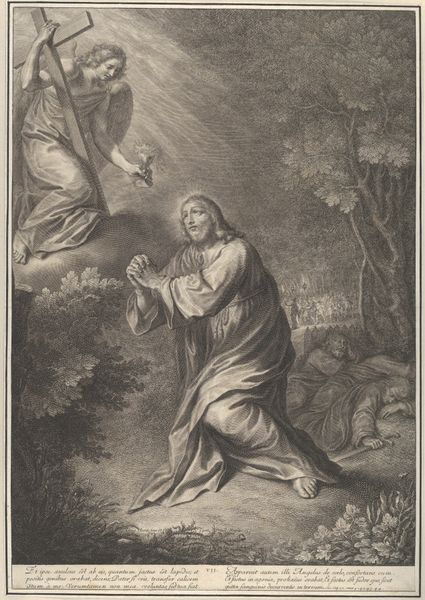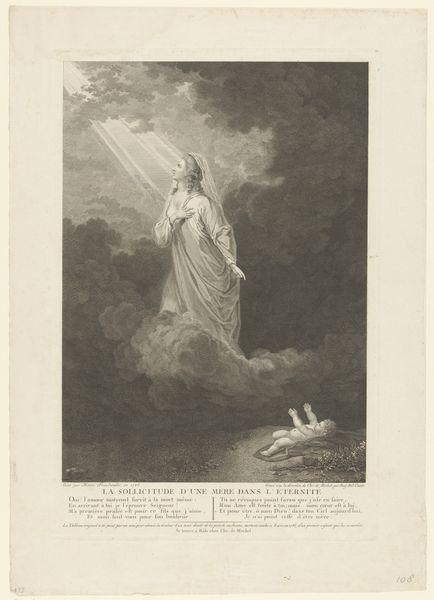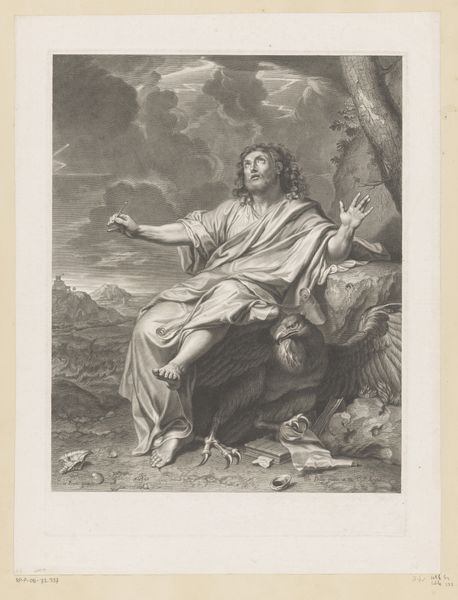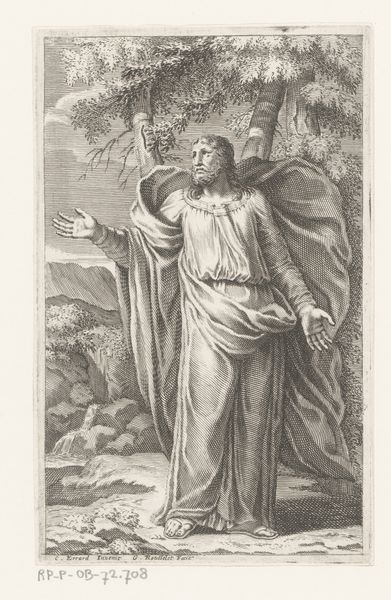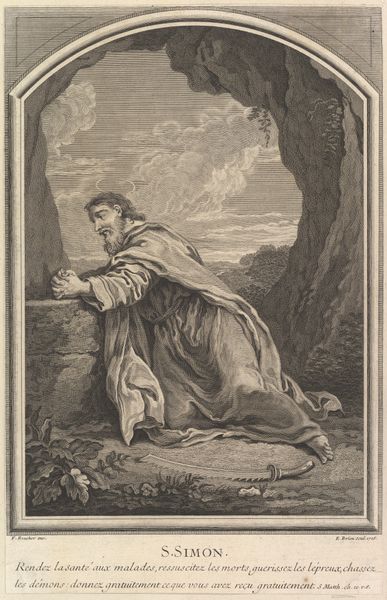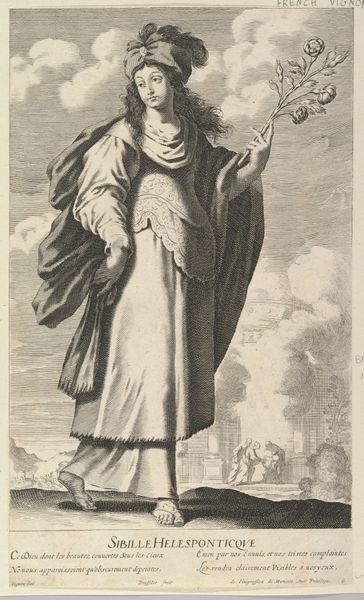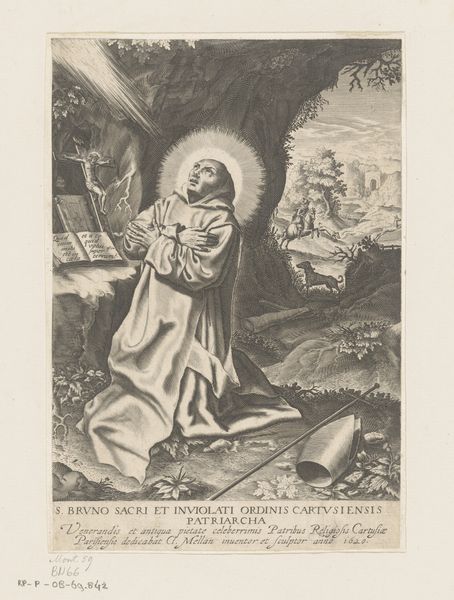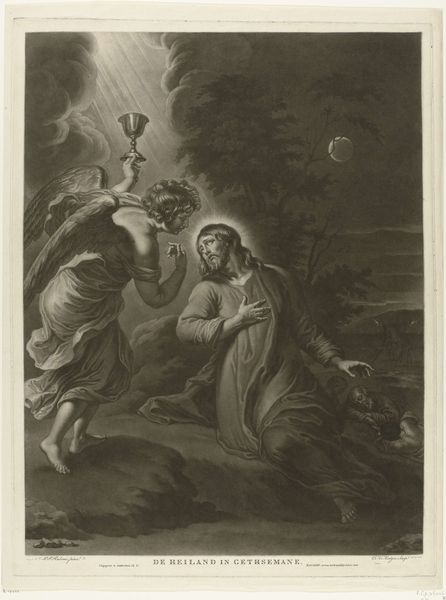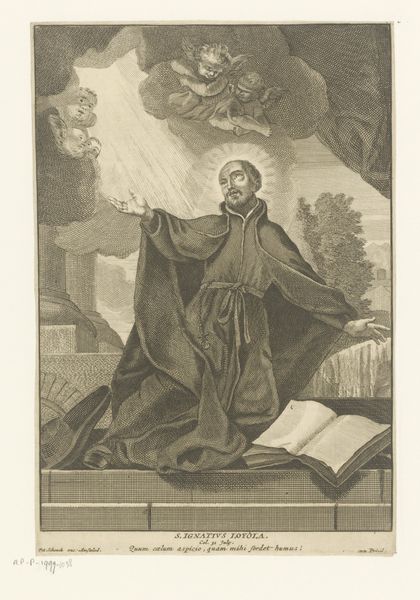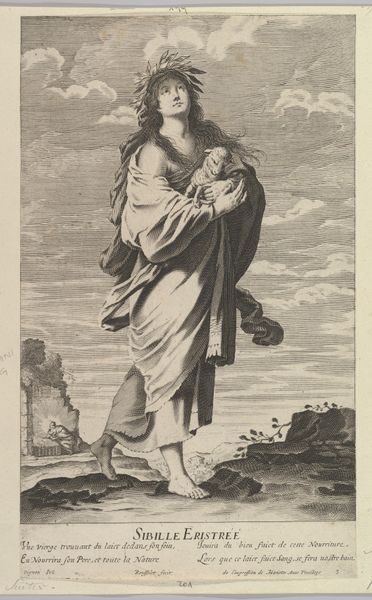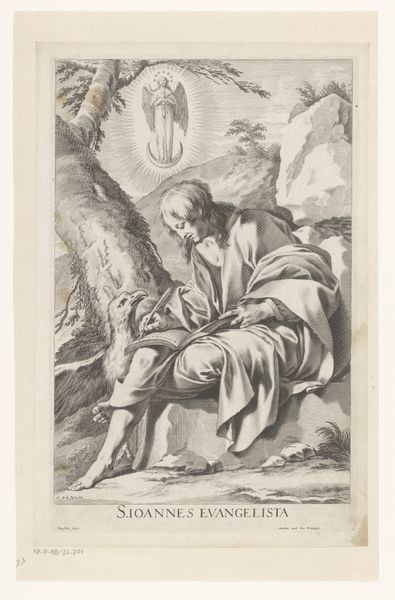
Dimensions: 425 mm (height) x 295 mm (width) (plademaal)
Editor: We're looking at "Christ in the Garden of Gethsemane," an 1822 engraving by J.F. Clemens, currently held at the SMK. It strikes me as incredibly dramatic. The stark contrast between light and shadow, the tormented pose of Christ—it's all quite intense. What are your initial thoughts on the composition and the use of line? Curator: The print exhibits a studied use of line, meticulously controlled to generate varied tones and textures. Observe how the density of lines dictates areas of shadow versus highlights, creating a palpable sense of depth. Do you notice how the single light source from above directs your gaze? Editor: Absolutely. That beam of light not only draws attention to Christ, but also adds a certain tension with the surrounding darkness. The disciples are barely visible in the background, almost swallowed by the landscape. It makes Christ's isolation more palpable. What is the effect of that choice? Curator: The strategic use of the setting as a design element creates psychological isolation, emphasizing Christ's internal struggle through visual means. Examine the texture and detail—notice the varying line widths and cross-hatching. Editor: It is really remarkable! Looking at it closer, I can appreciate the precision. Do you think this linearity is purely technical, or do you think it might inform our broader understanding of the image? Curator: Line as a structural device transcends mere technicality, acting as a conveyor of emotion, adding tension and perhaps revealing something deeper about the artist’s intent. Editor: This emphasis on structure really clarifies how artistic choices contribute to the emotional impact of a work. Thanks for highlighting that! Curator: My pleasure. Seeing how such an intentional design informs meaning is invaluable in grasping artistic expression.
Comments
No comments
Be the first to comment and join the conversation on the ultimate creative platform.
